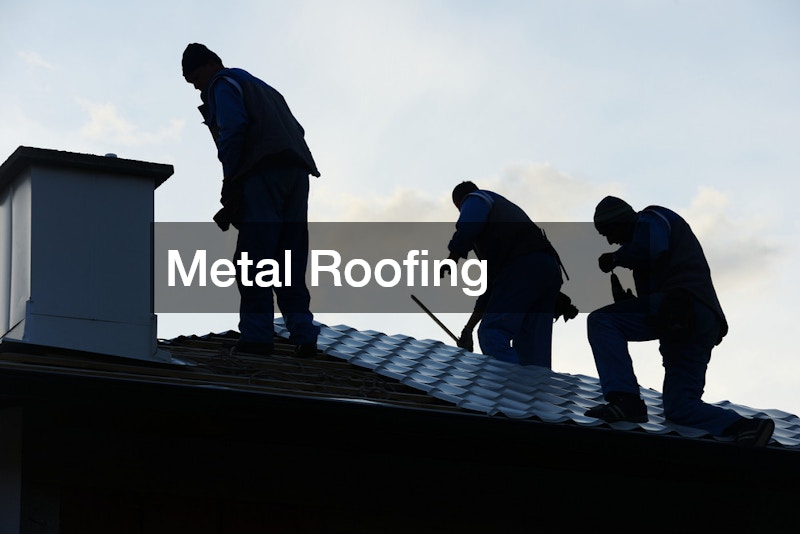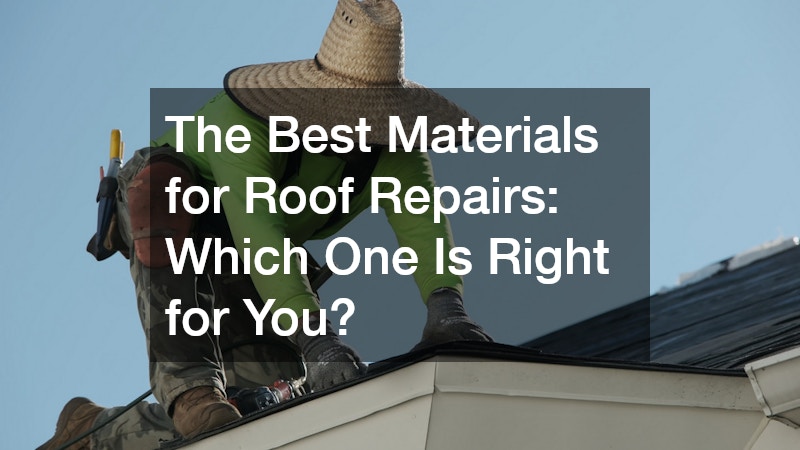Roof repairs can be a daunting task, largely due to the wide array of materials available in today’s market. Understanding both the benefits and limitations of each option will help you make an informed decision that suits your specific requirements.
Factors to Consider When Choosing Roofing Materials
Durability and Lifespan
Durability and lifespan are crucial when considering roofing materials, as they directly affect the longevity of your roof repairs. Different materials vary significantly in how long they last, while asphalt shingles may last 20 years, metal roofs can endure for over 50 years under the right conditions.
Environmental factors, like UV radiation and precipitation, can also impact material lifespan, making durability a critical factor to evaluate.
Opting for a material with a longer lifespan can result in fewer repairs over time, offering added peace of mind. Yet, material choice should also account for the specific ways local weather impacts durability. For example, metal roofs tend to perform better in regions prone to storms. By considering lifespan in tandem with environmental interaction, you can ensure your roofing investment withstands the test of time.
Cost vs. Benefits
The financial aspect of roofing materials involves weighing initial costs against long-term benefits. While some materials like asphalt shingles are cost-effective upfront, they may incur more frequent maintenance compared to options like metal or slate. Cost-effective strategies involve analyzing not just the immediate expenses but also future savings realized through durability and reduced maintenance needs.
Additionally, consider the energy efficiency of a material, which can lead to significant savings on heating and cooling bills. For instance, some roofing options, like metal, have reflective properties that can reduce energy consumption by keeping homes cool in hot climates. Material benefits that lower operational costs provide an added advantage in determining the best option for your roof repair project.
How Climate Affects the Choice of Roofing Materials
Adaptability to Weather Conditions
Climate plays a pivotal role in determining the ideal roofing material, as environmental conditions such as moisture, wind, and temperature extremes profoundly impact performance. Materials like metal or clay tiles are praised for their adaptability, offering robust resistance to weather damage in numerous climates. Coastal areas, for instance, often require salt-resistant materials, where metal roofing performs exceptionally well due to its corrosion resistance.
In colder climates, roofs must withstand heavy snow loads, making materials like slate or metal preferable due to their structural integrity. Conversely, heat-resistant options like light-colored asphalt shingles or reflective metal roofs minimize heat absorption in warmer regions, enhancing energy efficiency. Evaluating adaptability aids in selecting a roofing material that harmonizes with environmental demands while upholding structural safety.
Energy Efficiency and Insulation
Energy efficiency in roofing materials can dramatically affect a home’s heating and cooling costs by dictating how much exterior temperature infiltrates the indoor environment. Certain materials, such as cool roofs with reflective surfaces, offer superior insulation capabilities by reflecting sunlight and reducing heat absorption, thereby lowering energy consumption in warmer months. Conversely, materials effective at trapping heat are advantageous in colder regions, reducing reliance on heating systems.
Consider using energy star-rated roofing materials, designed to minimize energy usage while contributing to environmental sustainability. They not only lower utility bills but also increase overall comfort by stabilizing interior temperatures. With the growing emphasis on sustainable living, selecting energy-efficient materials aligns with broader environmental conservation goals.
The Most Popular Roofing Materials and Their Pros and Cons
Asphalt Shingles
Asphalt shingles are a popular roofing material due to their affordability and ease of installation, making them a go-to choice for many homeowners. One of the significant advantages of asphalt shingles is their versatility, available in various colors and styles to match different architectural aesthetics. However, they tend to have a shorter lifespan than some other options, necessitating more frequent repairs or replacements over time.
Despite their lower initial costs, it’s crucial to consider the potential for increased long-term expenses associated with maintenance and replacement. They’re susceptible to wind damage and may not perform optimally in areas with extreme weather conditions. Thus, while asphalt shingles offer a budget-friendly solution, their durability under specific environmental pressures can be a limiting factor.
Metal Roofing
Metal roofing stands out for its exceptional durability and minimal maintenance requirements, often lasting 40 to 70 years. Its fire-resistant properties add an extra layer of safety, particularly in areas prone to wildfires. While the initial cost of metal roofing is relatively high, its longevity and low maintenance often result in lower overall expenses over time.
Besides durability, metal roofs offer significant energy savings through their reflective surface, which minimizes heat absorption and helps maintain interior comfort. They’re highly adaptable to various climates, providing excellent protection against harsh weather conditions like snow, hail, and intense sun. These benefits underscore why metal remains a preferred choice for those seeking a resilient and energy-efficient roofing solution.
To ensure a successful and efficient roof repair, choosing the right material involves a careful examination of costs, durability, energy efficiency, and climate adaptability. Personal priority varies, but achieving a balance between immediate financial considerations and the material’s long-term benefits is essential for an effective repair strategy. Ultimately, understanding the unique needs of your roofing situation combined with environmental factors will lead to an informed decision, improving roof performance and longevity.




